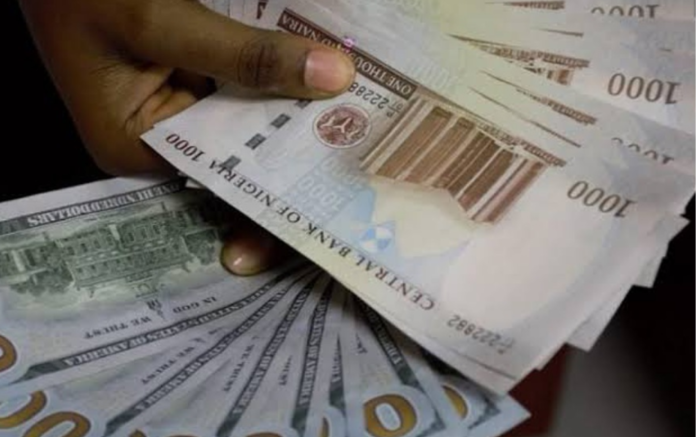By Milcah Tanimu
The naira has sustained its position within the N1500 bandwidth against the dollar in the parallel market, while the U.S. dollar index surged above 105 points. Despite the Central Bank of Nigeria’s (CBN) hawkish stance, Nigeria’s high inflation has tempered the local currency’s potential upside.
Since last year, the naira has depreciated significantly, losing over two-thirds of its value. The National Bureau of Statistics (NBS) reported that core price growth, excluding energy and agricultural products, increased to 27% from 26.8% in May. Food inflation also rose from 40.3% in April to 40.66% in May.
Nigeria’s headline inflation rate is expected to remain high due to ongoing food supply shocks, elevated demand during the Eid-Mubarak festive period, and the anticipated increase in the minimum wage. The naira’s rapid decline has exacerbated the cost of food imports, with Nigerian importers facing high tariffs despite the economy’s heavy reliance on imports. The depreciation has led to increased prices for various commodities due to higher levies.
However, market fundamentals suggest that the naira is unlikely to reach its lowest point this month, thanks in part to recent measures by the CBN. The apex bank has established a special account with $2.9 billion to stabilize the volatile foreign exchange market. This move follows the FAAC Post Mortem Sub-Committee’s observation that funds from royalties and Production Sharing Contract (PSC) taxes were transferred to the Gazelle Funding account, as detailed in the Nigerian National Petroleum Company Limited (NNPCL) report.
Additionally, the African Export-Import Bank (Afreximbank) announced the transfer of $925 million to Nigeria’s oil-backed prepayment facility, enhancing the Project Gazelle Funding account originally financed by NNPCL. A $2.25 billion World Bank loan to Nigeria aims to stabilize the economy and provide support to the poor and vulnerable, which will increase dollar availability and strengthen the weak naira.
Meanwhile, the euro stabilized after a politically motivated dip last week. Traders are focusing on the U.S. retail sales report and comments from Federal Reserve officials to predict future interest rate changes. The U.S. dollar index, which measures the greenback’s strength against six major currencies, recently climbed to 105.46, a 0.18% increase. This follows a 0.2% decline from the six-week high of 105.4 set last Friday. The dollar index hit levels in the 105.8 range last seen in early May, driven by renewed political unease in Europe and expectations that the Federal Reserve will maintain its tight monetary policy stance.

